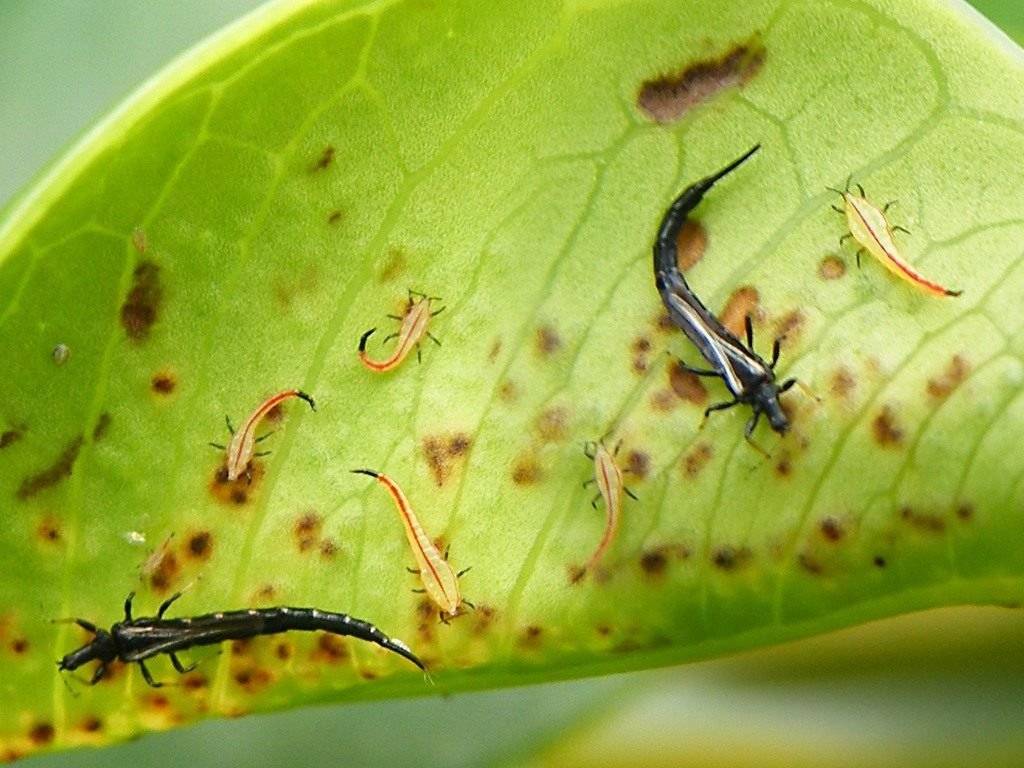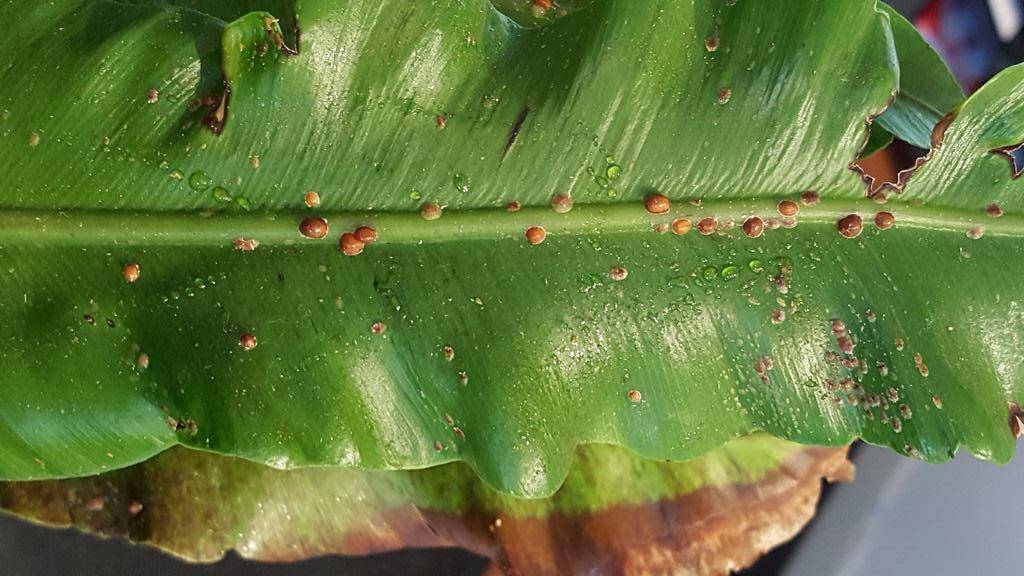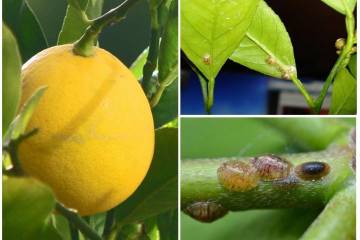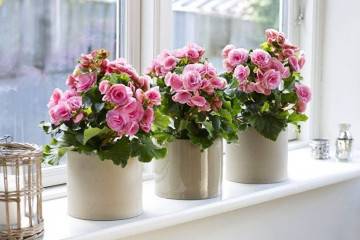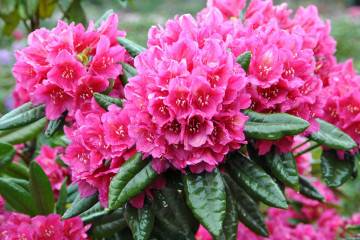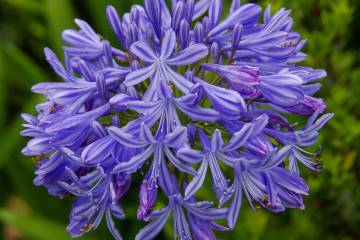Houseplant pests and indoor flower diseases
Houseplant pests appear due to improper care and unfavorable growing conditions. They not only reduce the decorative effect of flowers, but can also cause their death. Therefore, you need to know the signs of pest damage to domestic plants, as well as what to do when parasites appear.
Houseplant pests
Basically, flower growers are bothered by the following varieties of parasites.
White bugs in the ground
White bugs that live in the soil are called white podura. This insect can jump. The parasite has an elongated body on which sparse hairs grow, and there are antennae on the head.
They usually appear in humus-rich soil layers. White podura feeds on plant debris, but the living root system also suffers from it. Damaged roots cannot cope with their function, as a result, the flower stops developing and may die.
If small white bugs appear in indoor flowers in the ground, then you need:
- reduce watering, since bugs do not reproduce well in dry soil;
- be sure to make good drainage in the pot to prevent mold and soil acidification;
- dilute the soil with sand.
From chemical preparations, you can use pochin, aktara, bazudin.
Black bugs on indoor plants
Black bugs that appear on indoor flowers are sciarids, or mushroom gnats (black fly). This is a dipteran insect up to 7 mm in size. She has an elongated dark body and black wings, but some females have no wings. The adult black fly has long legs and a mustache.
For indoor plants, parasite larvae are especially dangerous, which feed on decaying tissues in the soil and damage the roots of flowers.
To get rid of pests, it is recommended to treat the ground with a slightly pink solution of potassium permanganate. You can chop the dill and sprinkle it on the topsoil, it will scare away parasites.
Of the chemicals for mushroom mosquitoes, drugs such as Initiative, Aktara, Thunder-2 are effective.
Aphids are the enemy of soft tissue plants
Aphids feed on plant sap, piercing leaves and green shoots with their sharp proboscis.
Light spots can be seen at the puncture site. The parasite itself is easy to see with the naked eye. The insect is green, its size reaches 2 mm. Aphids can be with or without wings. In the process of vital activity of the insect, honeydew is released, which sticks together young leaves and buds. Ants appear next, which feed on honeydew.
The damaged plant must be washed under the shower, as the aphids do not adhere well to the flower and are easily washed off with water.
The pest does not like crops that smell strongly, for example, geranium, so it is recommended to place it next to an infected specimen.
The infusion of citrus peel helps well against the parasite. To prepare it, you need to pour 1 liter of water 4 tbsp. spoons of zest.And you can use ready-made chemicals: aktara, confidor.
Onion root mite
The onion root mite damages the underground root system of bulbous plants. When infected, the roots turn into dust and fall off, the plant itself ceases to bloom and withers.
To find the pest, you will have to get the flower out of the pot. Therefore, it is possible to understand that a plant is infected only when it begins to wither.
The root onion mite can start in pots that do not have drainage, if the flower is watered abundantly and placed near a warm battery. In addition, the pest often settles in old soil, which over time has become compacted and no longer allows air to pass through.
If a tick has settled on a plant, then it must be set aside from healthy crops. A sick flower needs to be examined and, if the root system is severely damaged, then it is better to throw it away. When the roots can be saved, they are washed with running water and placed in an insecticide solution, for example, apollo, neorona, for 12 hours. The pot also needs to be rinsed with water and disinfected.
In the fight against root mites, folk methods also help, for example, nettle infusion. To prepare it, 700 g of fresh grass should be poured with 5 liters of boiling water. Pour the infusion into a resealable container, place it in a warm place for 5 days and stir periodically all this time. Then it should be filtered, diluted in a ratio of 1:10 and the plant should be watered with a solution.
Spider mite
The spider mite is a small parasite that is up to 1 mm in size. Usually it is not visible with the naked eye, but you can suspect that the pest has settled on the plant by the cobweb that has appeared on the leaves, shoots and other parts. On the leaves, you can see light puncture points, which also indicate insect infestation. Although the pest is small in size, it is very dangerous, since it quickly spreads on a bush and becomes the cause of its death.
After infection, the leaves and shoots are covered with a sticky cobweb in a short time, and the mite begins to suck out all the nutrients, as a result of which the leaves turn yellow and wither. The plant becomes unstable to fungal infection and dies after a while. If a spider mite hit a flower once, it is almost impossible to get rid of it, since part of its population remains in the ground. As soon as the plant weakens, the pest will begin to multiply on it.
To cope with it and save the plant, you need to start fighting the spider mite at the first sign of infection. To get rid of the insect, you can use special chemicals, for example, fitoverm, apollo.
You can also use folk methods:
- grate 20 g of laundry soap and dilute it in 1 liter of warm water. Leave the resulting liquid for a couple of hours, after this time, stir the solution and you can use it. The soil in the pot must be covered with cellophane so that the soap solution does not get on the roots, otherwise the flower will die. You need to wet the sponge with the liquid and apply it to the entire aerial part of the plant. The lather must be left on the flower for 4 hours and then washed off. The treated plant should be covered with a plastic bottle for 24 hours. This is necessary to maintain high humidity, which the spider mite does not like;
- chop 20 g of garlic and pour 1 liter of water over it. The resulting solution can be sprayed on the infected plant. If the indoor flower does not tolerate spraying, then chopped garlic can be placed next to the infected plant and covered with a bag, which must be removed after a couple of hours.
Greenhouse whitefly
The orange, or greenhouse, whitefly is a small butterfly. The length of females reaches 1.3 mm, and that of males - 2.5 mm.Not only adult whiteflies are dangerous, but also their larvae.
When they attack an indoor flower, its leaves discolor and curl, the buds of the plant begin to turn yellow and fall off. When touching an infected flower, whiteflies take off and land on plants standing nearby, on a windowsill, on shelves.
On the upper side of the leaf, you can see shiny sticky spots resembling sugary streaks, this is honeydew - traces of the pest's vital activity. If you turn the leaf over, you can see adults, larvae and eggs. White spots appear on infected leaves, then black spots. It is a sooty fungus that constantly accompanies honeydew. The affected plant lags behind in growth, does not develop and dies.
The whitefly not only sucks out all the juices from the plant, but is also a carrier of phytopathogenic viruses. She reproduces very actively, in a month the female lays up to 300 eggs, from which larvae quickly appear. They attach to the plant and begin to work with their glands, forming a waxy cocoon on the surface of the leaf, which protects the larvae from insecticides.
The infected plant must be removed from the other flower, and all its affected parts must be cut off. It is advisable to change the soil under the infected flower.
The plant pot should be placed in a place with low temperature and humidity. Adults die, and the larvae of the parasite do not develop at air temperatures below 10 ° C.
You can wash the plant under a cold shower, in this case, most of the pests will wash off and die. If you have a vacuum cleaner, you can use it to collect the bred whiteflies.
You can spray an infected plant with the following solutions:
- grate laundry soap on a fine grater. Take it 1 tbsp. spoon and pour 6 liters of warm water. When spraying a plant, you need to make sure that the soap solution does not get into the soil;
- chop 3 cloves of garlic, pour 1 liter of water over them and leave in a dark place for a day. After this time, the infusion is filtered and sprayed with an infected flower.
Thrips
Thrips have an oblong body, they can be up to 3 mm in size.
The color of the parasite can be from pale yellow to black. They feed on pollen, young leaves and shoots. Small yellow puncture points and black specks of excrement can be seen on the infected plant. In a short period of time, such points cover the entire flower, which begins to fade. Also, leaf discoloration may indicate infection. If you do not take action in time, the plant will die.
Most often flowering crops suffer from the parasite, such as:
- home roses;
- pelargonium;
- violet;
- streptocarpus;
- hibiscus.
To get rid of parasites, you can use chemicals such as fitoverm, dantop, aktara.
To prevent the insect from spreading to healthy flowers, a diseased specimen must be quarantined. If it blooms, then you will have to remove all the buds from it, as many parasites accumulate in them. Treat the plant itself with laundry soap, tie it with a bag and leave for 2 days. After this time, wash the flower, while you need to make sure that the soap solution does not get into the ground.
To combat thrips, you can use a zooshampoo for ticks and fleas, which contains permethrin. It must be diluted in a small volume of water to obtain foam, which is used to process the aerial part of the plant. Zoo shampoo should be left on the flower for half an hour and then washed off.
Shields and false shields
Scabbards have a dense chitinous shell. It can be light, cream, or dark brown. The size of the pests reaches 4 mm.They settle on leaves and stems; inexperienced growers may mistake them for growths on plants.
A close relative of the scale insect is the false scale insect, which does not have a chitinous shell; it also causes great harm to indoor flowers.
Both parasites stick to the leaves and stems and suck out all the useful substances from the plant, as a result, it begins to turn yellow, shed leaves, wither, and a fungus starts in the micro-wounds left by insects. Lack of timely assistance will cause the death of an infected crop.
If parasites are found, they need to be collected by hand, you can clean the plant from them with a toothbrush.
The infected flower should be rinsed under a hot shower. The water temperature should be 50 ° C.
If the plant is heavily infested, then you need to completely change the soil. The ground part of the flower should be treated with soapy water. Chemicals such as spark of gold, aktara can be used.
Diseases of indoor flowers
Diseases of indoor plants are associated with improper care.
White bloom on the ground in pots
White bloom on the ground in pots of indoor plants can occur from watering with hard water. To soften the water, you can boil or freeze it and then water the flowers.
When the white coating is soft to the touch, it is mildew. To get rid of it, you need to reduce watering, remove a layer of moldy soil. The soil must be treated with antimycotic agents. For the treatment of fungus, you can use drugs such as Topsin M, Sarfun 500 SC.
The appearance on plants of a white bloom resembling cotton wool is associated with a mealybug. The parasites can reach a length of 1 cm. The insect settles on the inner side of the leaf and feeds on the sap of the plant. When on indoor flowers there is a white bloom like cotton wool, you need to ask first of all how to treat it, otherwise the plant may die in a matter of days. To save the infected culture, you can use the funds admiral, commander, tanrek.
Why does potted soil grow moldy?
There are several reasons why potting soil grows moldy. Mold can be associated with over-watering, frequent spraying. To prevent it from appearing, you need to water the plant when the top layer of the earth dries out by 2 cm. Also, drainage must be done in the pot.
Sooty fungus on indoor plants
Sooty fungus, or rabble, refers to infectious diseases. A plaque forms on the plant, which clogs the stomata on the leaves, as a result of which photosynthesis is disrupted, the flower lags behind in development and weakens.
To prevent the development of infection, it is necessary to spray the plants in a timely manner from parasites that form sweet secretions. These are insects such as aphids, thrips, scale insects.
The infected plant should be wiped with soapy water and then rinsed with warm water. After that, in order to cure the flower, you need to treat it with phytosporin.
It is necessary to get rid of pests of indoor flowers as quickly as possible, otherwise the affected plant may die in the eyes. In addition, insects, having killed one flower, quickly switch to another. Therefore, in order to preserve the home collection, it is worth carefully examining each specimen and taking timely measures to combat unexpected guests.


